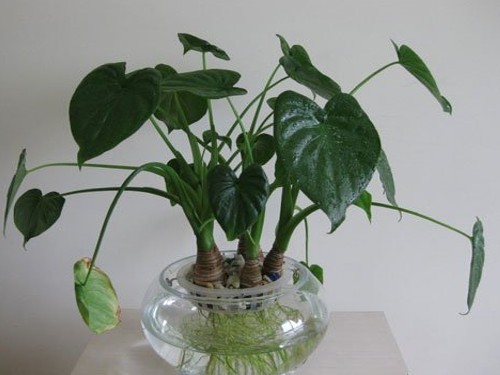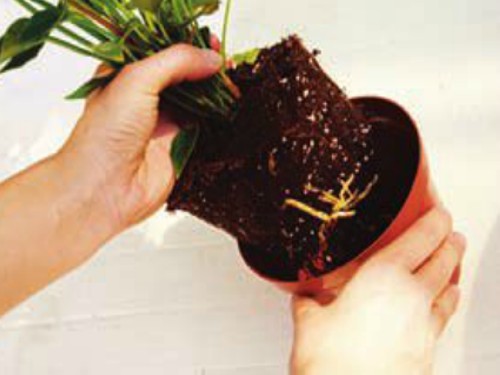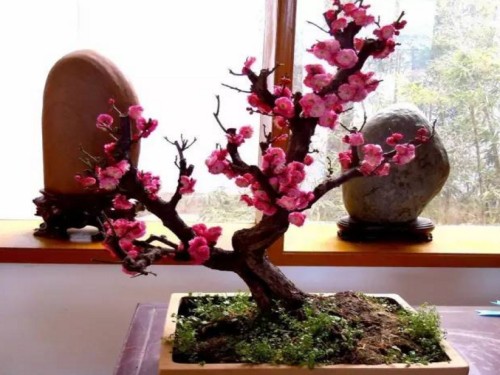The causes and treatment methods of Guanyin rotting Root in Water Culture
Many flower lovers encounter the situation of water-fed Guanyin rotting roots. in fact, this situation is mostly caused by the fact that flower friends do not know enough about hydroponic plants, and many flower lovers think that it is OK to put the roots of plants into the water. actually, this is wrong. Water-raised plants have to go through a series of processes such as root washing, disinfection, and domestication in order to be regarded as hydroponic plants. for flower lovers, it is often necessary to wash the plant roots clean, and then put them in hydroponic utensils, although the effect of hydroponics can be seen in a short time, but rotten roots may occur in the later stage.

Continue to talk about dripping Guanyin, dripping Guanyin aquaculture and other flowers and plants, flower friends should remember, do not put the roots in the water, but put the roots in the water, and leave some other roots so that they can come into contact with the air, which will help the roots to breathe. Look at the picture below (in the picture is thousand-handed Guanyin, which is the same as Dishui Guanyin, just like Dishui Guanyin), the roots of Dishui Guanyin are outside, and half of the roots are in the water. Half of it is in the air, which is good for root breathing.
For Guanyin, which has rotted roots, the rotten parts should be cut off, and then disinfected conditionally, such as potassium permanganate and plant ash. After disinfection, the wound is dried in a cool place, and then soil cultivation is carried out. Wait for the plant to return to normal (rooting) and then hydroponic culture. If it is still easy to rot in hydroponic culture after root cutting, flower friends can measure that it is hydroponic after soil cultivation. Or continue hydroponics.
[cause of rotten root]
Hydroponic dripping Guanyin is often in a weak state because of careful daily maintenance, while rotting roots may be due to long-term failure to change water, resulting in changes in water, and lack of nutrients after acidity and alkalinity are difficult to balance, which is not suitable for dripping Guanyin root growth, resulting in rotten roots. Secondly, or because of the lack of light, the leaves breed bacteria, diseases and pests, and the roots rot seriously.
[solution]
Whether it is soil culture or water culture dripping Guanyin, after the details of rotting roots appear, they should be dealt with in time to avoid the spread of the disease and it is difficult to restrain it. The detailed steps are as follows:
1. Take out the rotten root dripping Guanyin in water culture directly, while in soil culture dripping Guanyin, look at the practical round wooden stick, gently insert it around the root of the plant, and then carefully separate the dripping Guanyin from the soil until the root is completely removed. Avoid uprooting vigorously.
2. After the dripping Guanyin is completely removed, you can directly use the plant pruning tool to cut off the rotten roots, and then trim all the branches and leaves of the plant, leaving only the healthy roots.
3. The root of the trimmed dripping Guanyin plant is placed in clean water for washing. After washing the soil and soil, the root can be disinfected and directly soaked in diluted carbendazim or potassium permanganate solution for about 5 minutes. Then take it out, rinse with clean water, place it in a ventilated position, and dry it for about one day and night.
4. After re-preparing the potted plant, the dripping Guanyin after the rotten root treatment, the best cultivation method is soil culture, first disinfect the flowerpot, then configure the nutritious soil, the humidity is about 8% at this time, take the new soil as the best choice, the soil is loose, has certain air permeability, contains a lot of sandy soil, and the soil should not be too dry, you can choose to water with Amoy rice.
5. After the treatment, the root of dripping Guanyin should be buried as if it were in the soil, about 2/3, not too deep.
6. in the later stage of maintenance, we should avoid too much moisture, keep the light for more than two hours a day, and adopt the way of "dry watering".
7. In daily fertilizer and water treatment, fattening with less irritation should be chosen to avoid stimulation to the injured roots and cause injury that is difficult to recover. It needs to be observed from time to time that after the rotten root treatment, the dripping Guanyin will sprout new branches for about a month, and at this time the rotten root deals with the damaged parts and recovers. In peacetime, adequate nutrients need to be protected, and preventive measures should be taken against all kinds of diseases and pests. Guanyin dripping after re-cultivation of rotten roots is in the stage of very easy infection, so it can be disinfected about twice a month.
8. One week after Dishui Guanyin rotted root, it changed greatly, but a week later, it was still withered, yellowed and the root obviously softened, which proved that the treatment of rotten root failed and the plant was difficult to recover, so it should be discarded at this time.
Time: 2019-06-01 Click:
- Prev

How to raise Anthurium andraeanum in hydroponics? Methods of hydroponic culture of Anthurium andraeanum
In the hydroponic culture of Anthurium andraeanum, half of the roots should be exposed to the air, so that the roots can breathe in the air, otherwise, it will easily lead to rotting roots. The roots of hydroponic plants grow when exposed to light, and the plant cells have photosynthesis after exposure to light, and so are the roots. It's normal when it's green. As long as it's not in direct sunlight.
- Next

How to raise red plum bonsai-- the method of red plum bonsai culture
Red plum trees are elegant, dry and covered with sparse branches, vigorous and simple, the most beautiful. The best ornamental period is the flowering period, usually from February to March. If you want to blossom during the Spring Festival, you can put the red plum bonsai into a greenhouse of about 10 ℃ about 40 days before the Spring Festival. You should have enough sunshine and spray water frequently.
Related
- Fuxing push coffee new agricultural production and marketing class: lack of small-scale processing plants
- Jujube rice field leisure farm deep ploughing Yilan for five years to create a space for organic food and play
- Nongyu Farm-A trial of organic papaya for brave women with advanced technology
- Four points for attention in the prevention and control of diseases and insect pests of edible fungi
- How to add nutrient solution to Edible Fungi
- Is there any good way to control edible fungus mites?
- Open Inoculation Technology of Edible Fungi
- Is there any clever way to use fertilizer for edible fungus in winter?
- What agents are used to kill the pathogens of edible fungi in the mushroom shed?
- Rapid drying of Edible Fungi

